Give Peace A Chance: The Art of John Lennon Exhibition in its’ Indianapolis Premiere

Media Inquiries & Interviews:
Allison Zucker-Perelman
Relevant Communications
allison@relevantcommunications.net
dd 561.715.9525
All Editorial Usages must accompany: Images Courtesy of Yoko Ono © Yoko Ono
Breaking News – Announcing the World Premier of:
John Lennon / In My Life
In My Life is a journey into John’s life and legacy through the most important drawings that he created throughout his career. This beautiful series of 15 editions will be released starting on June 1, 2024, with the very limited first edition in the series: Lucy in the Sky with Diamonds.
This is the 57th anniversary of the release of Sgt. Peppers Lonely Hearts Club Band album and the song Lucy in the Sky with Diamonds.
CV Art and Frame in Zionsville is the host gallery for the prestigious event.
Lucy in the Sky will be on display for collectors and fans to view and purchase during the
show June 7th – July 6th , 2024 while quantities last.
Lucy in the Sky
The original drawing for this edition was done in 1964 and was used as the centerfold in John’s book In His Own Write.
His depiction of a girl flying mirrors the lyrics of the song that was released on the Sgt. Pepper album three years later. The original song Lucy in the sky with diamonds was released on June 1st, 1967.
This piece is the inaugural edition of the In My Life portfolio.
In My Life is a portfolio of limited editions that will all be created in the same format as the original Bag One portfolio that John released in 1970, staying true to John’s vison about how his art should be presented.
About The Exhibit

Indianapolis: Indiana May 2024: CV Art & Frame, Zionsville’s premier fine art gallery, presents “Give Peace a Chance – The Art of John Lennon”. This newly curated Exhibition is a must-see…and will present in a limited engagement from June 7th – July 6th , 2024. A special Opening Reception is planned for Friday, June 7th from 4-8 pm. RSVPs are requested at 317-873-2976 or gallery@cvartandframe.com. Visit the event at www.cvartandframe.com for more details. Admission to this extraordinary presentation is complimentary and open to the public. All artwork is on exhibition and available for purchase. These graphic works, by one of the most important cultural figures of our time, celebrate human love and communication – two themes at the heart of John Lennon’s contribution to the art of the twentieth century. Over the course of John Lennon’s career, his work as an artist expressed the societal themes that touched his life. Never in history has an Exhibition been so relevant, and so powerful.
Check out the event! CV ART PRESENTS GIVE PEACE A CHANCE

“Give Peace a Chance: The Art of John Lennon” showcases the captivating history of Lennon’s visionary art, from his early childhood to his untimely death in 1980.
The message of “Give Peace a Chance” continues to resonate with audiences across generations. In an increasingly connected and tumultuous world, the song serves as a reminder of the enduring importance of peace and unity. Its lyrics evoke a sense of hope and inspire individuals to work towards a more harmonious coexistence, making it as relevant today as it was when it was first recorded.
Lennon’s artwork predated his success with the Beatles and remained a passion throughout his years as a music legend. During his lifetime, he produced numerous series of sketches and lithographs, which were published starting in the early 1960s. Often surreal and composed through a method of free association, his drawings from this period were widely considered some of the finest interpretive artworks of the era.
In 1969, Lennon began exhibiting selected drawings from a series entitled Bag One. This array, now part of the permanent collection of the Museum of Modern Art in New York City, was wildly popular and frequently censored due to its overt eroticism. His peace-themed sketches were elevated through their use in antiwar movements, beginning in the 1970s and continuing to the present day. Capturing his emotional, political, and imaginative energy, this lavishly produced collection serves as a timeless record of John Lennon’s creative spirit.
Born John Winston Lennon on October 9, 1940, in Liverpool, England, he died tragically on December 8, I980. He married Yoko Ono at Gibraltar on March 20, I969. On March 26, 1969, John and Yoko commenced their famous bed-in for world peace at the Amsterdam Hilton.
While music will be remembered as his most popular art form, he loved both his literature and his art, studying at Liverpool Art Institute from I957 – I960. He penned and illustrated three books: “In His Own Write”, “A Spaniard In The Works” and “Skywriting By Word Of Mouth”. As early as I968 Lennon began moving toward a return to visual art. He was primarily interested in drawing and favored the creative loose sketch working in pen and ink. In I969, as a wedding gift for Yoko, John drew the “Bag One” Portfolio, a chronicle of their wedding ceremony, honeymoon and their plea for world peace, the Bed-In. The suite also contained erotic sketches.
The Bag One series was first published and exhibited in January 1970 at the London Art Gallery. On the second day the exhibition was closed by Scotland Yard and the erotic lithographs confiscated. During 1986 Yoko Ono, Lennon decided to share John’s artistic genius with the public by publishing the first in a series of prints entitled “This Is My Stary Bath Humble and True”, followed in 1988 with “Bag One Continued ” and the “Dakota Days”. These works are a commentary on John’s everyday life with Yoko and Sean. The drawings are whimsical yet poetic, loving portraits of their years together.
These graphic works, by one of the most important cultural figures of our time, celebrate human love and communication – two themes at the heart of John Lennon’s contribution to the art of the twentieth century.


Photo by Iain Macmillan
WHEN DID JOHN LENNON START CREATING ARTWORK
John attended the Liverpool Art Institute for three years (1957-60). During that time, he developed a style of sketching and drawing figures containing his somewhat sarcastic sense of humor. In later years he would incorporate this whimsical style into art for his books and work done for various social movements. John memorialized the infamous Bed in for peace by creating sketches of the scene; many of these drawings are now part of the Bag One collection of John’s art.
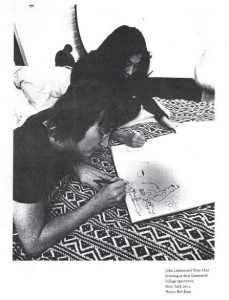
WHERE WERE THE ORIGINAL DRAWINGS USED OR DISPLAYED?
John’s drawings were used as illustrations for best-selling books that he wrote in the 1960’s. These include A SPANIARD IN THE WORKS and IN HIS OWN WRITE.
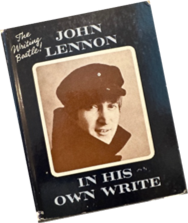

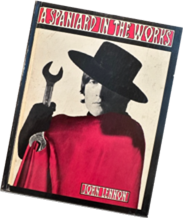
© Yoko Ono
In 1970 John released the only suite of Hand Signed art that was ever produced by John Lennon. This Bag One portfolio is highly prized by Lennon collectors worldwide.
The title Bag One indicates that a second series was forthcoming. John had planned to release additional series of art but the criticism and subsequent arrest on pornography charges soured him on the idea.

WHAT DOES BAG ONE MEAN
John created a portfolio of drawings in 1969, which he entitled “Bag One”. These drawings depicted John and Yoko’s wedding and honeymoon as well as some very erotic poses of he and Yoko having various kinds of sex. Fourteen of these were used as the images for the Bag One suite. The fifteenth print was scribed directly on the printing plate at the time of printing. The lithographs were pencil signed and numbered in edition of 300 + 45 HC. These were packaged and sold as portfolio sets only. The 300 portfolios consisted of the fifteen lithographs, all with matching edition numbers, in a white vinyl portfolio case designed by Ted Lapidus.
These were quickly sold out in major galleries in London, NY, Chicago, and Toronto. John was charged with obscenity at the opening of his Chicago Area show on March 28, 1970. This exhibit was at Merrill Chase galleries in Oakbrook. The erotic prints were seized for evidence as pornography. The court case was a long-drawn-out affair. John and the gallery eventually won the case and a very decisive precedence for freedom of speech.
Noteworthy: A complete suite of the “Bag One” portfolio of lithographs is in the permanent collection of the Museum of Modern Art in New York.
WHAT ARE THE PRINTS THAT ARE BEING EXHIBITED IN THE GALLERY
After the Beatles broke up in 1970 John began to venture around the world in pursuit of a kind of happiness that was lacking as a BEATLE. He cherished his new wife Yoko and wanted to learn all he could about the Japanese culture and art that was her background. It is important to understand that John and Yoko’s relationship was based on a mutual love for art. John met Yoko at one of her shows in New York. Yoko was part of the Fluxus movement of artists that eventually became the neo-expressionist’s period that influences much the art we see today. This art movement is often overlooked as to its importance in the evolution of modern/contemporary art in the 20th century. To Yoko’s installation of a hammer with nails next to it he asked her something to the effect of: “What if I pound the nails in”. That began a love story that John chronicled in sketch pads she had given him; and asked that he record their life together.
Over the years John saved and preserved several hundred drawings that he considered to be the most significant. In 1986, Yoko Ono, began releasing limited editions of some of the most meaningful drawings, using fine art printing techniques, she showcased John Lennon as an important artist of his time.
Each print had John’s signature embossed as well as Yoko Ono Lennon hand signed in pencil. She also includes the chop in red ink on the art. This is John’s personal chop and translates to “Like a Cloud, Beautiful Sound. “
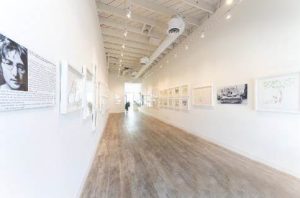


WHAT IS THE LYRIC PRINT?
The manuscript editions are hand- pulled serigraphs reproduced from Lennon’s original hand-written lyric sheets. They are signed in the plate and are limited to an edition of 1,000 numbered and 75 artist proofs worldwide.

© Yoko Ono

Bed in For Peace
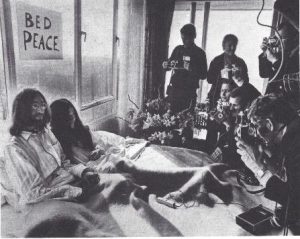
The Bed-In event is directly connected with the marriage of John Lennon and Yoko Ono in March 1969. From Paris, the couple flew to Gibraltar on 20 March, where they were married at the British consulate. The wedding itself was a performance and a public sign of their love. At the same time, however, they called into question its strict regulations by their behavior and their clothing. After the ceremony they left Gibraltar and traveled to Amsterdam.
As the press would have tracked them down no matter where they spent their honeymoon, they made the honeymoon itself a public event. They exploited the media to campaign for their political cause: peace. They planned to stay in bed for a week and let their hair grow – an entirely peaceful and meditative action as a demonstration against violence.
From 25 to 31 March, they rented Presidential Suite 902 on the seventh floor of the Amsterdam Hilton and invited the press to discuss peace. Lennon and Yoko Ono arranged the bedroom to accommodate the crowd of reporters and photographers. They removed most of the furniture and pushed the bed in front of the large window to which they had stuck sheets of paper with their messages: “Hair Peace” and “Bed Peace.” All over the walls there were further hand-written posters calling for love, peace, and freedom: “I love John,”
“I love Yoko,” “Stay in bed” and “Grow your hair.” The room was decorated for the bridal couple with lavish bouquets of flowers and an enormous gift basket. The bed, that most private of places, became a public stage.
On the first day of the performance, Lennon and Ono met the media in their pajamas – more than 50 journalists were there. They spent a total of seven days in bed giving interviews. “Yoko and I are quite willing to be the world’s clowns,” said Lennon, “if by doing so it will do some good. I know I’m one of these famous personalities.” For reasons only known to themselves, people do print what I say. And I’m saying peace . . . For Lennon and Yoko Ono, in addition to the campaign for peace, mass communication and media itself were the theme. “Our name is known and so we’re using our fame and our money to advertise for peace,” Lennon explained in an interview. But this point came into the crossfire of criticism because the argument was turned around and they were accused of wasting money for their own publicity when it could be used more sensibly for starving people in Biafra.
Lennon and Yoko Ono wanted to repeat the Bed-In in the USA. However, as Lennon was refused an entry visa, they headed for the Bahamas instead, but decided in the end to hold their second performance in Montreal, where they would have easy access to the North American media.
From 26 May to 2 June 1969, they held a Bed-In at the Queen Elizabeth Hotel, Room 1742, in Montreal. They gave more than 60 interviews. “The whole effect of our Bed-In has made people talk about peace. We’re trying to interest young people into doing something for peace. But it must be done by non-violent means – otherwise there can only be chaos. We’re saying to the young people – and they have always been the hippest ones – we’re telling them to get the message across to the squares . . . The whole scene has become too serious and too intellectual.”
IMPACT:
The legacy of “Give Peace a Chance” lies in its enduring message and the impact it made on popular culture. The song’s themes of peace, unity, and activism continue to be relevant today. It remains a symbol of hope and a reminder that society should strive for peaceful resolutions to conflicts. “Give Peace a Chance” has become an anthem for generations and will forever hold a special place in music history.
While it is difficult to measure the exact impact of a song, “Give Peace a Chance” undoubtedly brought attention to the anti-war movement and sparked discussions about the importance of peace. The song’s success in both popular culture and activism fostered a sense of unity and inspired individuals to make a difference. In that sense, it can be considered a triumph in its mission to promote peace.
Interviews Available for this Indianapolis Presentation @ allison@relevantcommunications.net
No Images of the Art or Photography may be used without proper Photography Credit & Copyright: All Images: Copyright © Yoko Ono.

